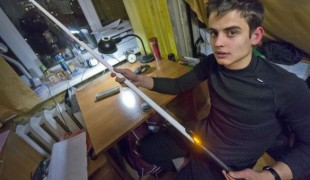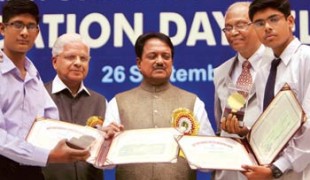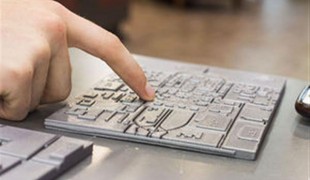- 2454
- 170
- 1
- 1
- 0
- Help Ukraine
About the solution
Layla, who was born blind, says that her hands act as her eye's so her father bought a Robo 3D printer to help her better understand things and learn.
She is currently in the eighth grade, and was facing tremendous difficulties due to her blindness. Education is completely geared towards sight and while plenty of braille alternatives have fortunately been made already, lots of basic concepts in math, for instance, are very difficult to grasp when blind.
As no simple teaching alternatives for the blind existed, Jason just decided to make one himself. "I started 3D printing pieces of pie and take them down to her and explain that this is a third and this is a sixth. Because in her mind, she thought that a sixth was bigger than a third because the number is bigger" Jason says. Helping his daughter feel and experience objects, just as you would draw a pizza for other struggling children, really helped. "I see with my hands so some ideas are hard, fractions are cool. And then geography was easier once I could feel the earth" Layla said of these objects. "In her hand she can feel the difference in size and she's like 'Oh I get it'", said her dad.
"Layla’s predominant sense that she uses to see and learn the world is touch" mother Dori explains, so the parents set out to 3D print objects for their daughter. As Layla liked busses at the time, Jason first 3D printed a bus on his ROBO 3D printer to enable her to understand the concept of turning thoughts into objects. "I thought my dad bought it at the store. I asked for a bus and then a few hours later I could touch it" Layla said about that first print.
Adapted from: http://bit.ly/1GTMVQb
What about you, do you have any solutions? Please share them with the Patient Innovation community!
https://www.youtube.com/watch?v=aS7MCeKiDMc
This solution shall not include mention to the use of drugs, chemicals or biologicals (including food); invasive devices; offensive, commercial or inherently dangerous content. This solution was not medically validated. Proceed with caution! If you have any doubts, please consult with a health professional.
DISCLAIMER: This story was written by someone who is not the author of the solution, therefore please be advised that, although it was written with the utmost respect for the innovation and the innovator, there can be some incorrect statements. If you find any errors please contact the patient Innovation team via info@patient-innovation.com
-
-
679
-
8
-
21262

Der sprechende Stock für Sehbehinderte
Blindness
Congenital visual acuity reduced
Neurologic visual problems NEC
Sudden visual loss
Visual disorders NEC
Visual impairment
Blindness (excl colour blindness)
Blindness congenital
Blindness cortical
Blindness hysterical
Blindness transient
Blindness traumatic
Blindness unilateral
Diabetic blindness
Eyes
Cane
Walking
-
-
-
481
-
0
-
12118

Teen invents smart stick for blind people
-
-
-
501
-
4
-
11859

Blind girl creates campus map for the visually impaired
-
 en
en